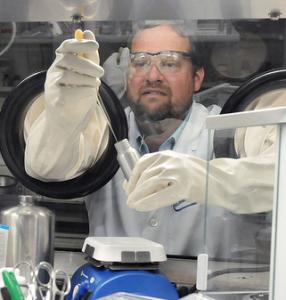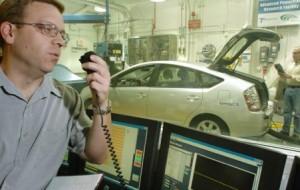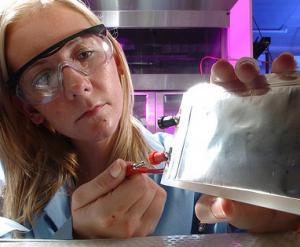The Department of Energy will soon open a research hub devoted exclusively to improving battery and energy storage performance at the Argonne National Laboratory (outside Chicago) and will fund it with $120 million over the next five years. This program is a follow-up jolt to the Obama administration's frantic first term initiative to jump-start advanced battery manufacturing in the US, when taxpayers saw the DOE invest $2 billion in grants for 29 battery makers to build or update plants. (read press release) Unfortunately, although advanced research began and new manufacturing plants were built, there have been setbacks caused by weak demand for electric vehicles, resulting in high-profile bankruptcies and the collapse of government-backed battery maker A123. Consumers just weren't impressed by the high cost, limited battery life and range of EVs like the Nissan Leaf.

Recreating the synergies of the old Bell Labs
So basically, the Battery Hub's stated goal is to make EV's more appealing by developing batteries that have five times more storage capacity, at one-fifth the cost, within five years - or the "5-5-5" plan. It's an ambitious timeline associated with earlier crash programs like the Manhattan Project or the Apollo Program, and it represents a high stakes race against China to dominate 21st century high tech manufacturing. The new program's motto could be: "Time isn't just money, it's giga-watts." Watch the full press conference:
Secretary Chu, who created the Hub concept, told the press, "This is a partnership between world leading scientists and world leading companies, committed to ensuring that the advanced battery technologies the world needs will be invented and built right here in America." Chu strongly supports the concept becasue he wants to recreate the synergies of the old Bell Labs, a research power house in the 50s and 60s where Chu once worked collaborating with physicists, chemists, and engineers to solve a wide range of practical problems. Officially named the Joint Center for Energy Storage Research, although it could be called the DOE Energypalooza ( no, APRA-e already trademarked that name), it will bring together top researchers from institutions around the country, including Lawrence Berkeley National Laboratory, Pacific Northwest National Laboratory, Sandia National Laboratories, and several others. Four companies are also joining the project: Dow Chemical Co, Applied Materials Inc, Johnson Controls Inc and Clean Energy Trust. Scientists explain Argonne and the Hub's strengths in the video above.The holy grail for a smoothly functioning power grid
The Hub will focus on three emerging battery technologies: the first two, multivalent systems and the chemical transformation reactions, are promising ways to optimize EV and device batteries; and the third, flow batteries, would help smooth out power grid fluctuations caused by renewable energy.

Multivalent batteries will hopefully replace industry-standard lithium with materials containing greater energy density - like magnesium and aluminum - that can transport two or three electrons for every charge instead of one. But Hub scientists will struggle to overcome their inherent reactivity. Meanwhile, researchers will try to develop a completely different way of coaxing energy from a battery. Instead of intercalation - sandwiching molecules between each other in the batteries' electrodes, they will try "extracting energy through creation and destruction of chemical bonds," Jeff Chamberlain, an Argonne chemist and the Battery Hub's deputy director, explained to TPM.

Finally, Argonne is pursuing flow batteries, the holy grail for a smoothly functioning future power grid. By using Earth-abundant materials, these batteries can economically achieve vast scale and are so named because when the materials are heated to the melting point, they segregate into three layers - positive, negative and the separating electrolyte - where they can be charged and discharged quickly to stabilize fluctuations caused by wind and solar. Research will be accelerated because the Battery Hub won't be conducting open-ended research for purely exploratory purposes -- instead, the 120 scientists and engineers are working with standards that will allocate the funding toward projects that "demonstrate success," while "de-emphasizing" in Chamberlain's words, technologies that don't produce rapid or demonstrable progress.


